Pimento Cheese Biscuits
Makes 18 (2-inch) biscuits
Click here for a printable version of the recipe.
“Pimentocheese” is almost one word in the South, along with “ratcheese.” Pimento peppers – pointed red peppers similar to a bell pepper – were grown and canned in Georgia through 1970. They were mixed with mayonnaise and “ratcheese,” which was a large round of yellow American cheese similar to cheddar cheese. Rat cheese was kept in a round wooden container until ready to see, when it was placed under a glass “bell” and kept on a wooden board. It is found in grocery stores, delis, and even gas stations, and is used as a paste on white bread (fresh or toasted), cucumbers, and many other foods.
2-1/4 cups commercial or homemade self-rising flour, (see below), divided
1 cup shredded sharp cheddar cheese
1/4 cup chilled butter, roughly cut into 1/4-inch pieces
AND
1/4 cup chilled butter, roughly cut into 1/2-inch pieces
1 (4 ounce) jar pimento or roasted red bell peppers, chopped
1/4 cup finely chopped onion (optional)
1 cup buttermilk, divided
2 tablespoons melted butter
Butter, softened or melted, for finishing.
Preheat oven to 450 degrees F.
Pulse 2 cups of flour with the cheese two or three times in a food processor fitted with the knife or dough blade. Set aside 1/4 cup of flour. Scatter the 1/4-inch shortening pieces over the flour mixture and pulse 2 or 3 times. Scatter the 1/2-inch butter pieces over the flour mixture and pulse 2 or 3 times until mixture resembles well-crumbled feta cheese with no piece larger than a pea. Add the pimentos, onion, and 3/4 cup of buttermilk. Set aside the 1/4 cup buttermilk. Pulse mixture briefly to incorporate into a shaggy wettish dough. When the blade stops, remove the lid and feel the dough. Add reserved buttermilk or flour as needed to make a slightly wettish dough. Pulse once or twice more until the dough looks shaggy but holds together
Lightly sprinkle a board or other clean surface with some of the reserved flour. Turn the dough out onto the board and sprinkle the top lightly with flour. With floured hands, fold the dough in half, and pat dough out into a 1/3- to 1/2-inch-thick round, using a little additional flour only if needed. Flour again if necessary, and fold the dough in half a second time. If the dough is still clumpy, pat and fold a third time.
Pat dough out into a 1/2-inch thick round for a normal biscuit, 3/4-inch-thick for a tall biscuit, and 1-inch-thick for a giant biscuit. Brush off any visible flour from the top. For each biscuit, dip a 2-inch biscuit cutter into the reserved flour and cut out the biscuits, starting at the outside edge and cutting very close together, being careful not to twist the cutter. The scraps may be combined to make additional biscuits, although these scraps make tougher biscuits.
Using a metal spatula if necessary, move the biscuits to a lightly greased baking sheet so they are touching each other. Bake the biscuits on the top rack of the oven for a total of 13 to 15 minutes until light golden brown. After 6 minutes, rotate the pan in the oven so that the front of the pan is now turned to the back, and check to see if the bottoms are browning too quickly. If so, slide another baking pan underneath to add insulation and retard browning. Continue baking another 7 to 9 minutes until the biscuits are light golden brown. When the biscuits are done, remove from the oven and lightly brush the tops with butter. Turn the biscuits out upside down on a plate to cool slightly. Serve hot, right side up
Homemade Self-Rising Flour:
Sift together:
1 cup all-purpose flour (or 1/2 cup cake flour with 1/2 cup all-purpose flour),
1/2 to 1 teaspoon salt, and
1-1/2 teaspoons baking powder |
|
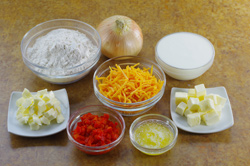
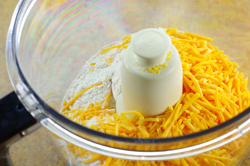
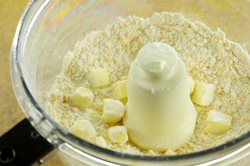
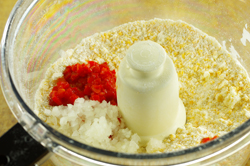
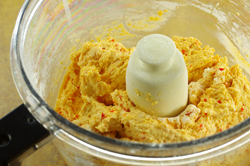
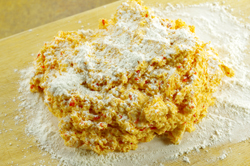
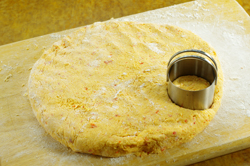
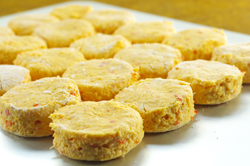
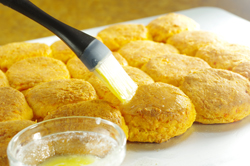
|


